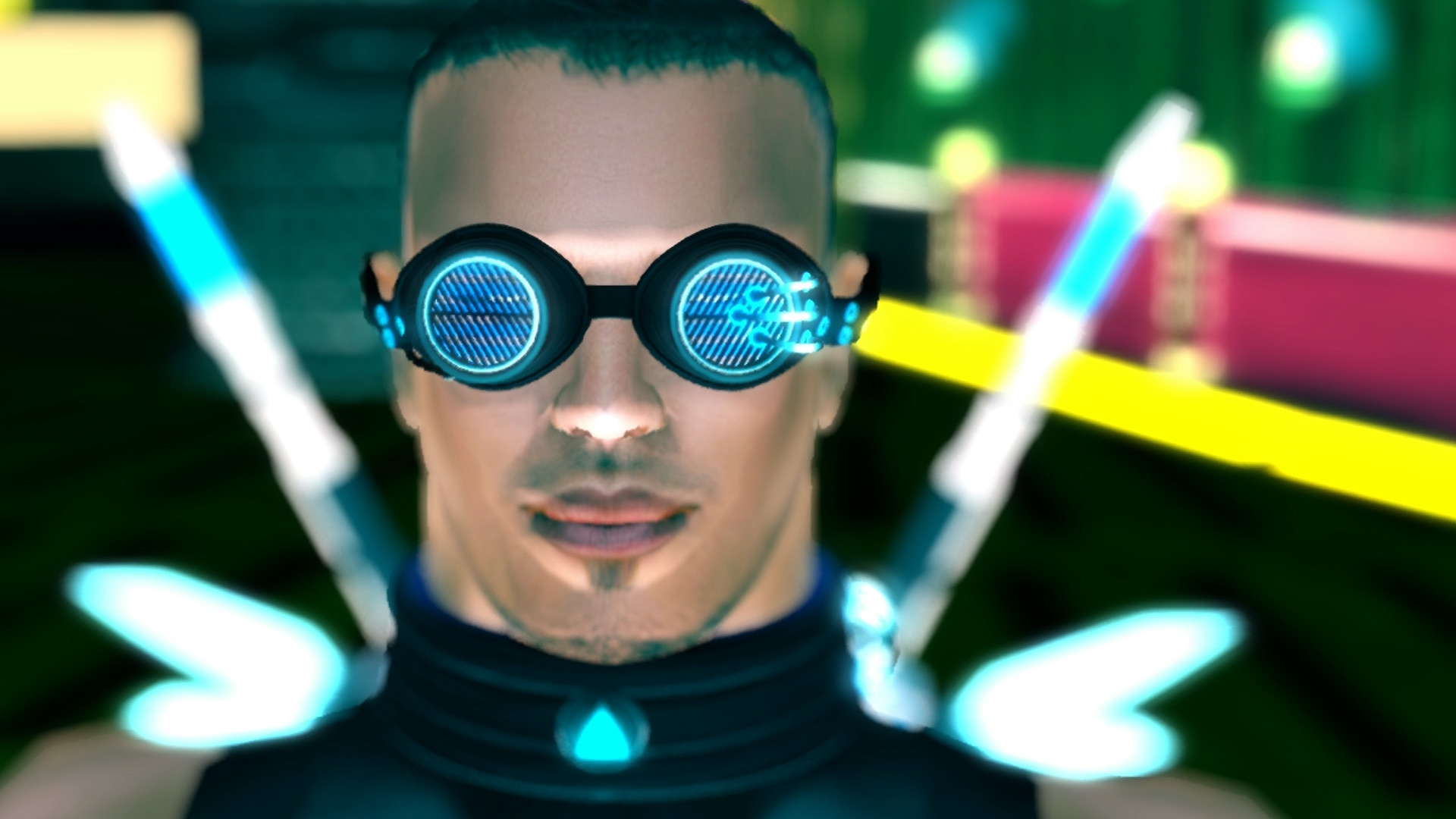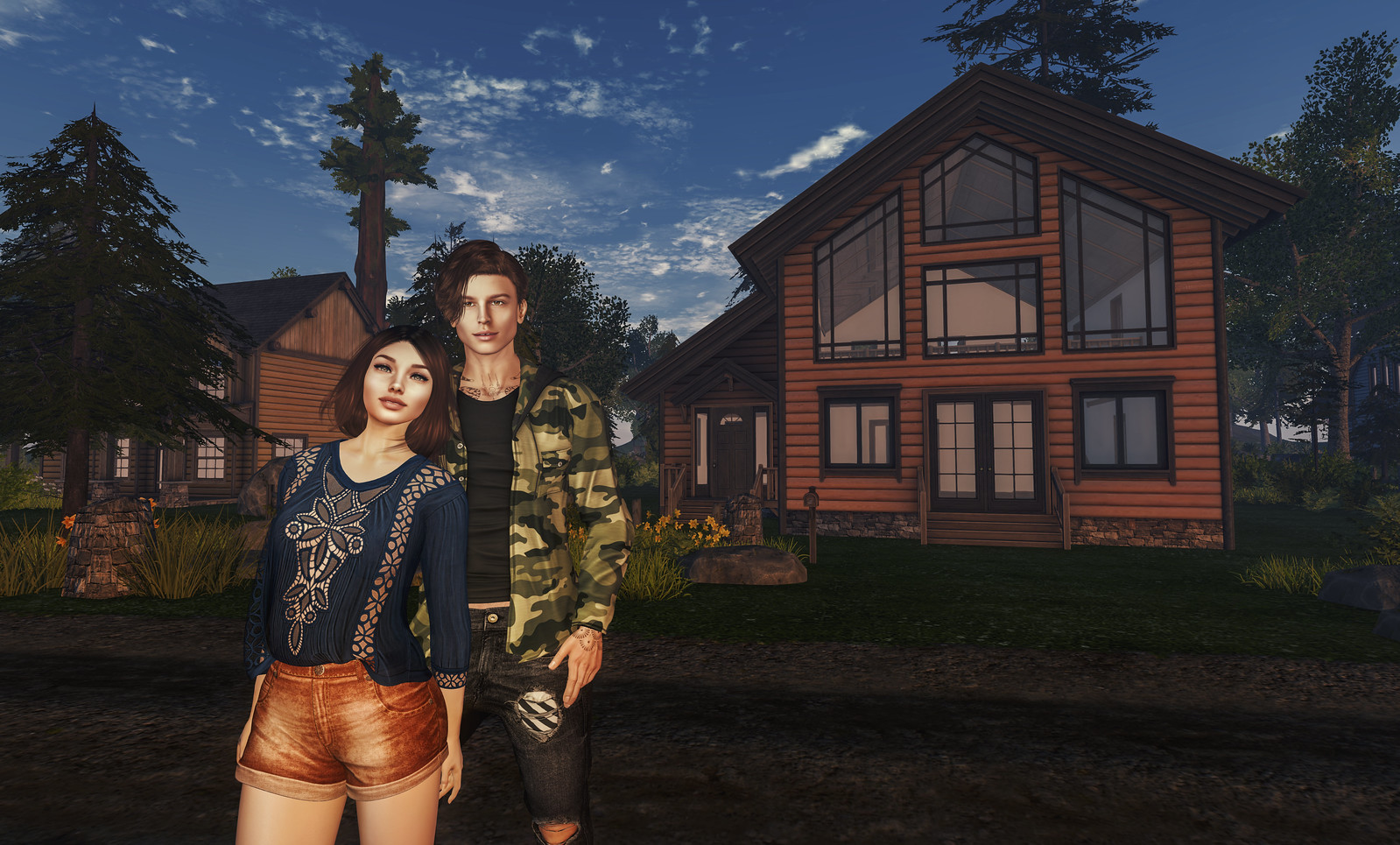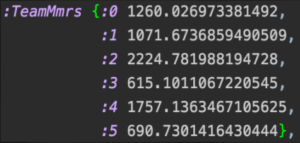Philip Rosedale is one of the few people in the world who can genuinely be called a metaverse pioneer. He founded the company behind Second Life, arguably the closest thing we have to the metaverses first described by sci-fi novels: a user-built 3D world in which inhabitants assume custom avatars, socialize, and run genuine businesses. It went nearly two decades without much direct competition, but all of a sudden it feels like even the pigeons in Silicon Valley are pitching the metaverse. Coo, coo, creator economy…

Philip Rosedale founded Linden Lab in 1999 because he “wanted to simulate a world that was real.” He left the company in 2010, but returned as an advisor this year. He also founded High Fidelity, which is currently working on spatial audio.
Rosedale is taking the metaverse boom (or bubble?) in good humor, but as you'd expect, he's skeptical that blockchain evangelists and a rebranded Facebook (it's now “Meta”) have all the answers to questions he's been thinking about for decades.
What I didn't expect is how grave some of Rosedale's concerns are. He's an entrepreneur—Second Life developer Linden Lab isn't the only company Rosedale has founded—but he comes across more like an academic who spends a lot of time daydreaming, so when he says that blockchain economies and Mark Zuckerberg's metaverse can only lead to the downfall of humanity, I'm convinced he's not just seeking publicity. (His Twitter account is full of musings like “if a virtual world doesn't have entropy, it can't contain life.”)
The good news, if we believe him, is that Rosedale doesn't think a bitcoin and Meta-powered apocalypse is in our future. Linden Lab executive chairman Brad Oberwager, a snack food entrepreneur and former investment banker who is perhaps the more business-focused of the two, shares similar views about how metaverses should be approached, and it's not the way most of Silicon Valley is going about it. A few weeks ago, I spoke to both of them about where they think metaverse newcomers like Meta (a name Rosedale isn't going to start using) are going wrong.
Do we even want new metaverses?

Brad Oberwager is executive chairman of Linden Lab and Tilia, and sits on the board of several other companies, including snack food company Sundia Corporation, which he founded.
In the context of 3D worlds like Second Life, metaverses are first and foremost social places, Oberwager thinks. You “play” a game, he says, but you “reside” in a metaverse, and he doesn't think a technology company can simply build somewhere people want to reside. Who wants to put on a VR headset to live inside of an advertisement, or go shopping in a virtual mall when it would be easier to do the same thing on a regular screen?
“The residents have to build the metaverse,” says Oberwager.
And that means they have to want to build the metaverse, but Rosedale wonders just how many people in the world actually want to interact through 3D avatars. Lots of kids do, in Minecraft and Roblox, but he doesn't think the average adult is currently comfortable inhabiting an animated avatar. That's especially true at work, where 3D worlds only complicate tasks that don't require them (perhaps it's telling that I met the guy who started Second Life over a regular video call). It's a problem Rosedale says he was dismissive of earlier in his career, but has come to respect throughout the existence of Second Life, which has plateaued at around a million users.
Above: Meta's vision of the metaverse.
The company Rosedale founded most recently, High Fidelity, originally planned to build a new virtual world with a blockchain economy—it launched a “stablecoin” that was later scrapped—but ultimately chose to focus on spatial audio, which he thinks is more important than avatars for creating “natural conversations” in virtual settings. In fact, he thinks an audio platform can be considered a “metaverse.”
“If you really want to meditate on the metaverse, just use Discord,” says Rosedale. “I mean, that's the metaverse. That is one of the most concrete examples of it. I think for 3D spaces, Second Life is the closest thing for grownups. For kids, I think Roblox and Minecraft are really interesting to be pondering.”
The rich get richer
The big thing that distinguishes Second Life from Discord is something Rosedale considers more integral to a simulated reality: alienable goods. He learned the term in 2004 from famous activist and law professor Lawrence Lessig.
“[Lessig] said to me, 'The way that you want to make digital objects real is by making them alienable,' and I didn't know what that word meant, which is totally funny,” says Rosedale. “A thing that is alienable is a thing that you can freely give to somebody else without anybody else approving.”
Blockchain economies are extremely dangerous.
If alienable digital goods sound like the same thing NFT promoters are selling, Rosedale would agree. Second Life created something like proto-NFTs, he thinks. The virtual objects in Second Life's world are tagged with information about who created them, who owns them, how much they cost, and what a purchaser can do with them. There's no blockchain ledger recording all the transactions, but there doesn't need to be, because everything in Second Life stays there, except for money, which can be exchanged for US dollars. (Linden Lab handles those transactions, for a fee.)

Rosedale is very much for the buying and selling of virtual goods—which to him makes a virtual world “real”—and the idea that people should own their digital property outright is mostly a sound one, he thinks. However, he's recently developed grave concerns about the way blockchain is being implemented.
“Blockchain economies are extremely dangerous,” says Rosedale. “They do some things that are good, but as a side effect in the way they're designed, they're an almost certainly fatal thing to humankind in the long term.”

According to Oberwager, Linden Lab spent seven years and $35 million securing money transmitter licenses in every US state so that Second Life users can turn their Linden dollars into US dollars and other currencies (a service it has now spun off as Tilia).
“I've got as many compliance officers as I have engineers,” says Oberwager. “It takes a lot of money to run a licensed money transmitter.”
Users of blockchain metaverses such as Decentraland , meanwhile, look to services like Coinbase to make exchanges.
I assumed that Rosedale was referring to the computational wastefulness of blockchain accounting and the resultant environmental costs, a common criticism. That's part of it, he says, but he was actually talking about something much more abstract. The problem, he believes, is that total decentralization inevitably increases wealth inequality. He pointed me to a simulation he designed last year in which bouncing balls demonstrate the theory that “the rich actually always get richer, no matter what.” It's something he devised after reading a Scientific American article on the topic.
“What I do in the simulation is I give 1,000 people each 1,000 poker chips, so everybody starts off with exactly the same number of poker chips, but then that means there's a million poker chips total,” says Rosedale. “And that's it. That's all you get. Now, let these people randomly engage in free market transactions.”
Those transactions are money transfers decided by coin flips. If I collide with Phillip in the simulation, there's a 50% chance he'll give me some money, and a 50% chance I'll give him some money.
“Most people would think that if you waited for a month, everybody would still have around 1,000 tokens, because we just flipped coins,” says Rosedale. “Tyler's not smarter than Phillip; If 50% of the time you get my money and 50% of the time I get yours, what happens to individual wealth? What happens is surprising, and of course, horrifying. What happens is that there's one winner. There's one extremely rich person and everyone else has nothing.”

“Designing around collapse”
If it seems hyperbolic to accuse bitcoin and monkey jpegs of hastening the apocalypse, it should be said that Rosedale doesn't really expect cryptocurrency and NFTs to be our downfall—it's more accurate to say that he doesn't expect them to stick around in this early, unregulated state. Blockchain economies aren't currently “functional for human needs,” he says, and we seem to be watching that play out. The scene is full of scams and heists: $617 million was just stolen from NFT game Axie Infinity, for instance.
All these Ponzi scheme type things, they rest on the hubris of everybody believing they’re smarter than the average bear. Which they’re not.
When it comes to virtual real estate, Rosedale offered San Francisco's famous 1870s spite fence as an example of what to expect when the only thing anyone trusts is money: a lot of trolling and extortion.
Oberwager wonders how a cryptocurrency economy is supposed to work given how wildly each coin's value fluctuates. For Second Life, Linden Lab acts as “the Fed and the Treasury,” he says, keeping the value of one Linden dollar equal to one US dollar. That means the stability of Second Life's economy depends on the stability of the US economy, but Rosedale would rather accept that than try to “design around collapse.”
“If you assume, like, 'Oh, the United States is going to collapse, and the dollar is going to go away,' that's a really bad outcome,” says Rosedale. “That's going to be a very difficult transition. And you can say, 'Well, you know, maybe if I buy the right coins, I'll be one of the lucky ones,' but nobody should be designing around that. All these Ponzi scheme type things, they rest on the hubris of everybody believing they're smarter than the average bear. Which they're not.”

The surveilled get surveilled-er
Rosedale's biggest beef isn't with the decentralization squad, though. It's with Meta and Google, whose reliance on advertising is also “a tremendous danger” to humanity, he says.
The metaverse is an “embodied internet, where you're in the experience, not just looking at it,” according to Zuckerberg. That means to Rosedale that it's an internet where Meta and its VR headsets can hypothetically track facial expressions, heart rate, gait, posture, body language, and other aspects of ourselves we don't even perceive, and then use that information to identify and influence us.
“Surveilling information about people, even if they're willing to give it to you, and then using that information against them, is definitely an existential threat” to humanity, says Rosedale.
“You'd have to be under a rock to not understand that, you know, Instagram can make you do things and TikTok is addictive, right?” says Oberwager.
“We all know that behavioral modification as a business model for the metaverse is terrifying.”
Second Life has higher revenues-per-user than YouTube or Facebook, but charges fees (for land and transactions) instead of selling ads with behavioral targeting and surveillance. And basic access is also free.It seems possible to provide virtual worlds without causing harm.January 15, 2022
It's another doomsday prediction, but Rosedale and Oberwager are hardly the first to consider mass data collection and algorithmic recommendation to be enormously dangerous. Meta itself is reportedly concerned that it's hurting people: According to a Wall Street Journal report, internal research at the company shows that Instagram is harmful to many teenagers, particularly teenage girls.
In a recent Wired article, researcher Katherine Cross described Meta's vision for the metaverse as the ideal growth vector for capitalism: a way to sell us useless but infinitely reproducible virtual goods while we market them to each other through endless performance. Similarly, theorist Byung-Chul Han wrote in 2012's The Transparency Society that we've entered a world in which “consumers voluntarily give themselves over to panoptic surveillance that steers and satisfies their needs.”
These descriptions have an apocalyptic bent, too, although their criticisms arguably apply even to Second Life. Is it just a nicer, but still grotesque result of a capitalist economy's need for endless growth? I don't know—I've spent at least a hundred bucks on Rocket League decals, so my stance is compromised—but it's hard to fault Rosedale for pursuing a childhood dream to simulate the world on computers. Simulating stuff on computers is cool. That's one of the tenets of PC gaming.
The Matrix is not the instruction manual. The Matrix is the warning.
Perhaps, as in Rosedale's free market simulation, good intentions don't matter, but he and Oberwager's case for Second Life being basically good, or at least neutral, is helped by its modest million-user population, especially when compared to big MMOs like World of Warcraft or the billions of users boasted by social networks like Facebook. Who's ever felt pressured to join Second Life?
“Would I like 10 million people [in Second Life]? Yes,” says Oberwager. “Would I like a billion people? Sure. Do I want everybody spending all of their time in it? No. The Matrix is not the instruction manual. The Matrix is the warning. I don't think that's good. But if advertising is your business model, you want everybody in there all the time. You want to spend as little money as you can, supporting them, and you want to get as much money as you can through volume. We spend so much more money per person on the Second Lifers, on the residents [than Meta]. But our business model is that you rent land. That seems fair. We have to pay for servers. I don't want to do it through advertising.”
- "
- 000
- 3d
- About
- ABSTRACT
- academic
- access
- Accounting
- accurate
- across
- Activist
- Ads
- Advertisement
- Advertising
- advisor
- All
- American
- animated
- Another
- around
- audio
- avatar
- average
- Beef
- Biggest
- Billion
- Bitcoin
- blockchain
- board
- body
- boom
- bubble
- build
- business
- business model
- businesses
- buy
- Buying
- call
- capitalism
- Career
- case
- chairman
- charges
- Chips
- Clothing
- Coin
- coinbase
- Coins
- collection
- Common
- Companies
- company
- competition
- compliance
- computers
- considers
- Consumers
- conversations
- coo
- Costs
- create
- created
- Creating
- creator
- credit
- cryptocurrency
- currencies
- data
- decades
- Decentralization
- Design
- developed
- Developer
- digital
- direct
- discord
- Dollar
- dollars
- Early
- economy
- Endless
- engage
- Engineers
- Entrepreneur
- environmental
- estate
- Exchanges
- executive
- experience
- extortion
- fair
- fault
- Fed
- Fees
- First
- Focus
- food
- Free
- full
- funny
- future
- game
- Gaming
- good
- goods
- Growth
- Headset
- higher
- How
- HTTPS
- human
- Humanity
- Humor
- i
- idea
- identify
- image
- implemented
- important
- Including
- Inequality
- influence
- information
- Internet
- investment
- IT
- join
- journal
- keeping
- kids
- language
- Law
- lead
- League
- learned
- Ledger
- licensed
- licenses
- Long
- MAKES
- Making
- mark
- Market
- Matrix
- Meta
- Metaverse
- million
- Minecraft
- model
- money
- more
- networks
- news
- NFT
- NFTs
- Other
- Pay
- PC
- PC Gaming
- People
- performance
- pitching
- platform
- play
- Poker
- ponzi
- Ponzi Scheme
- population
- possible
- prediction
- property
- RE
- Reading
- real estate
- Reality
- reliance
- Rent
- research
- REST
- Roblox
- Run
- s
- Said
- San
- scams
- scheme
- Screen
- sell
- Service
- Services
- Shares
- Shopping
- Silicon Valley
- SIM
- simulation
- So
- Social
- social networks
- Society
- spaces
- Spatial
- spend
- Spending
- Stability
- stablecoin
- start
- started
- State
- States
- street
- surveillance
- talking
- Technology
- teenagers
- The
- The Matrix
- The Metaverse
- the world
- Thinking
- Through
- Throughout
- tiktok
- time
- Tokens
- track
- Transactions
- transfers
- Transparency
- tremendous
- United
- United States
- us
- users
- value
- Video
- Virtual
- virtual world
- vision
- volume
- vr
- VR Headset
- VR Headsets
- Wealth
- What
- WHO
- Work
- working
- world
- Worlds
- year
- years
- youtube











